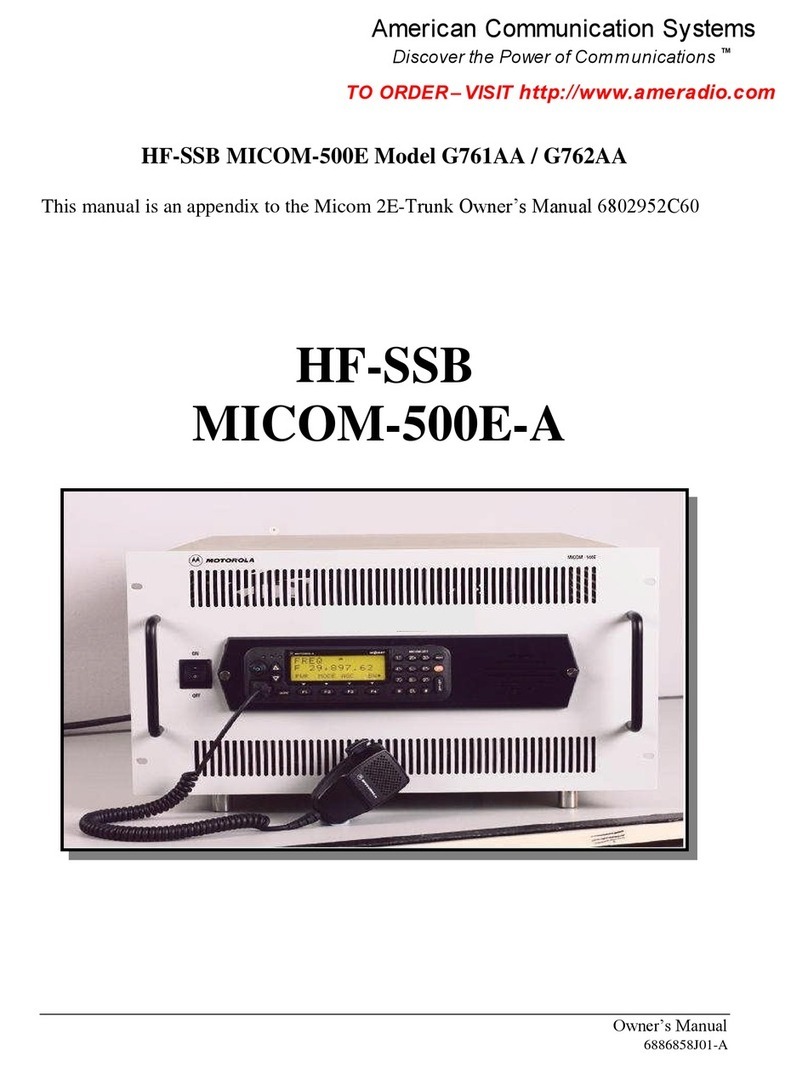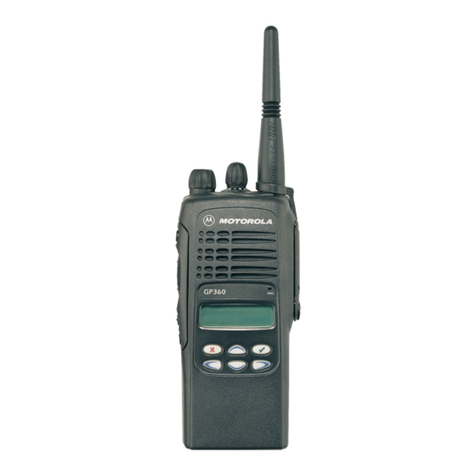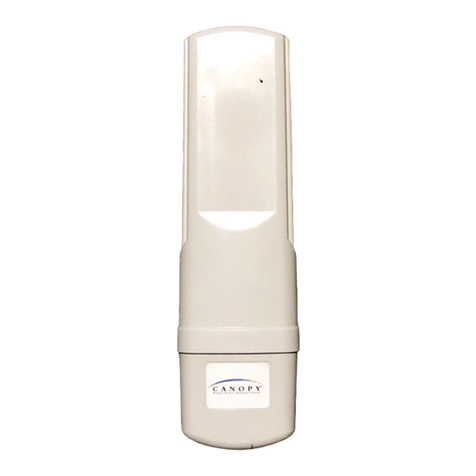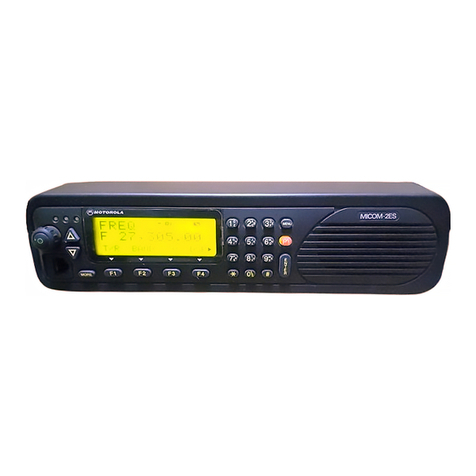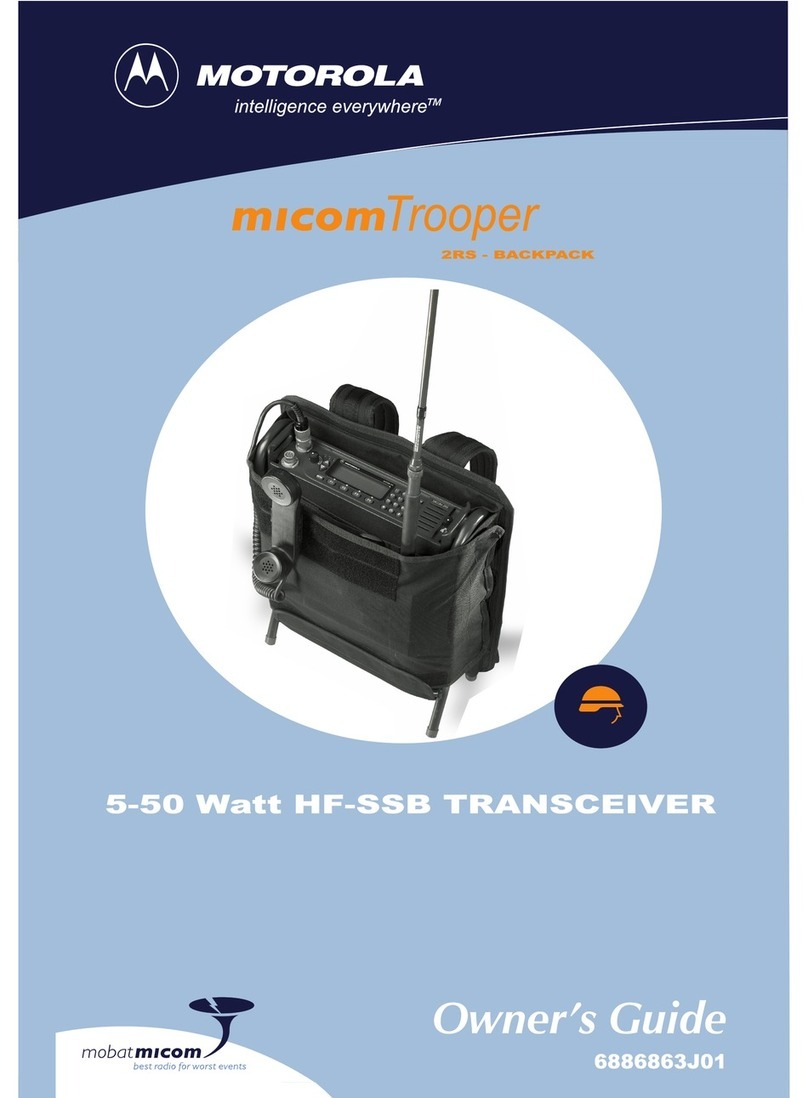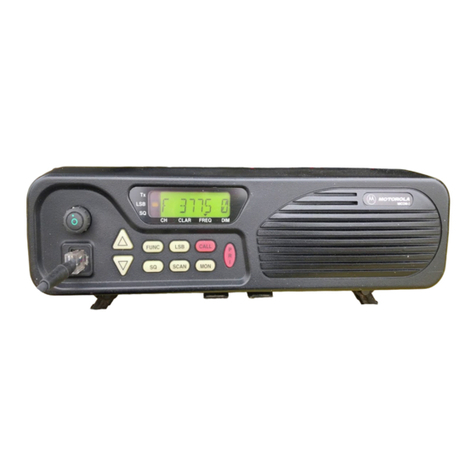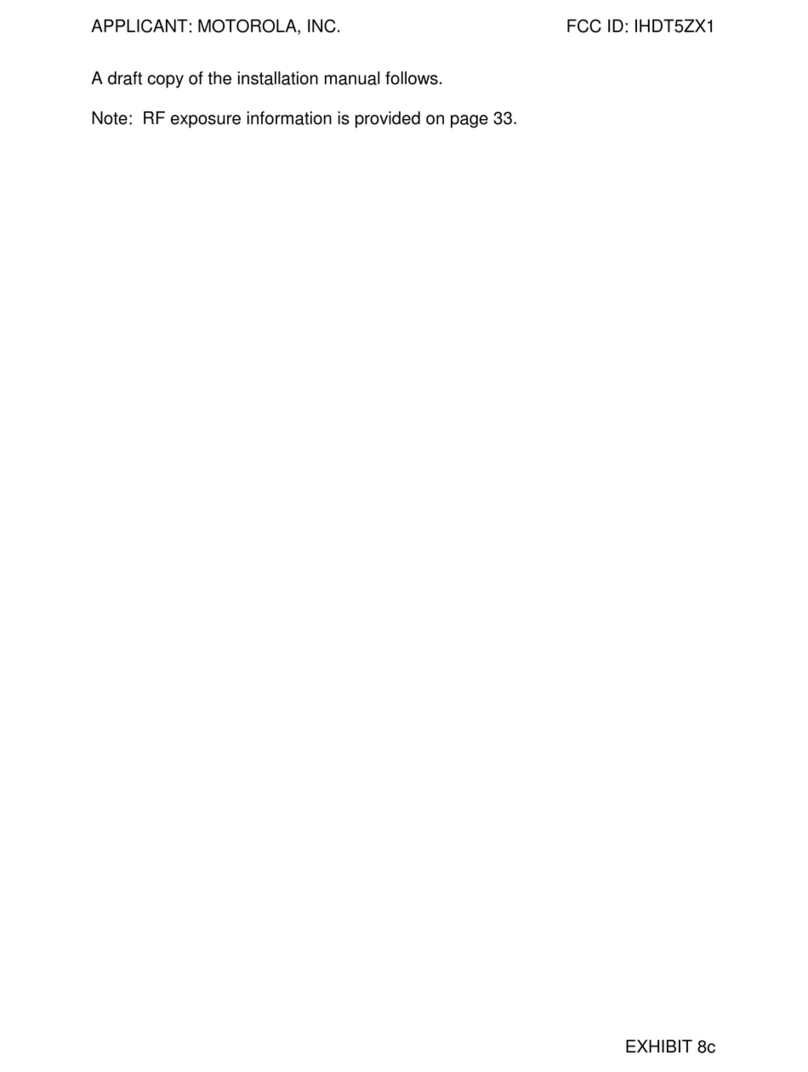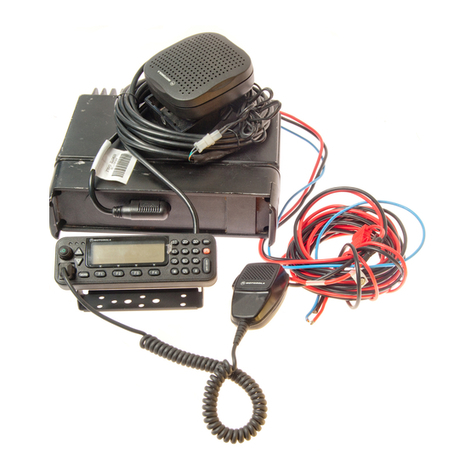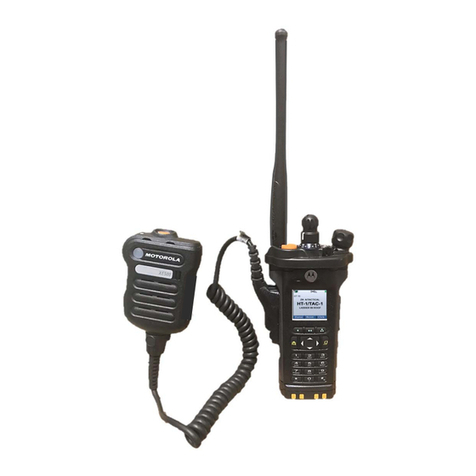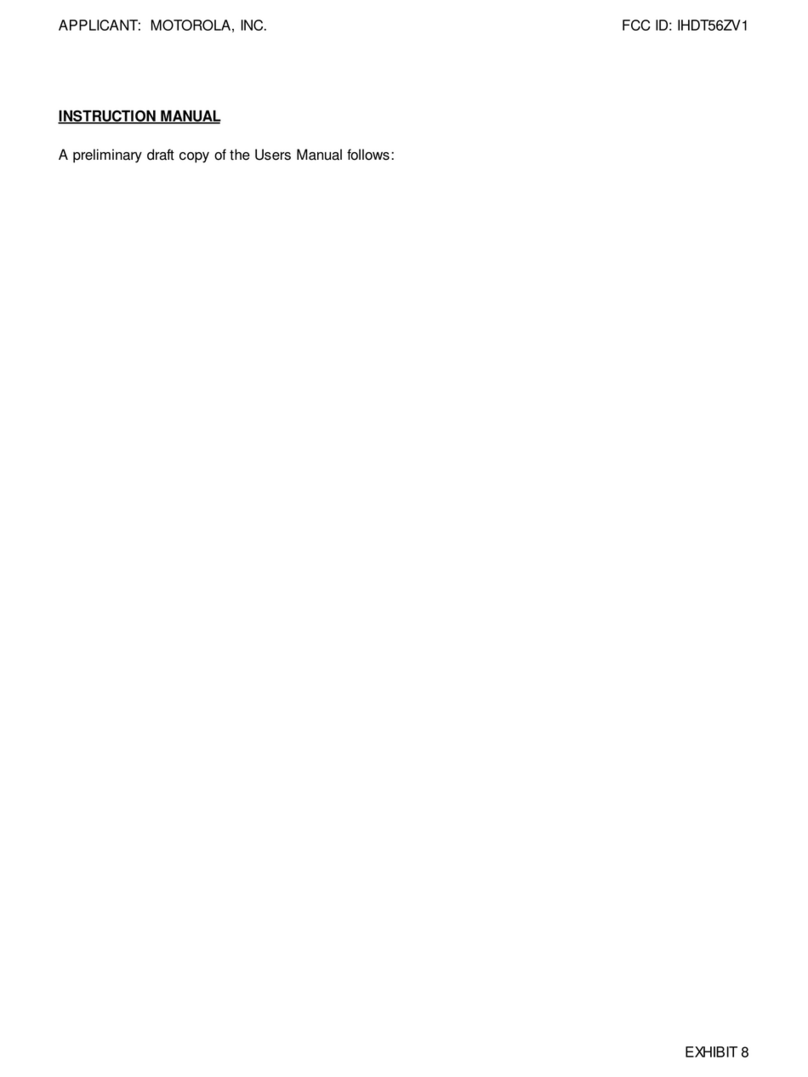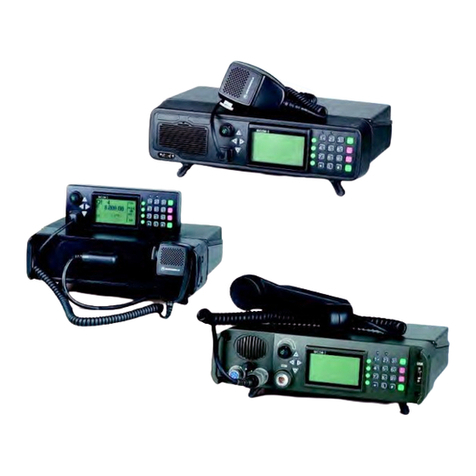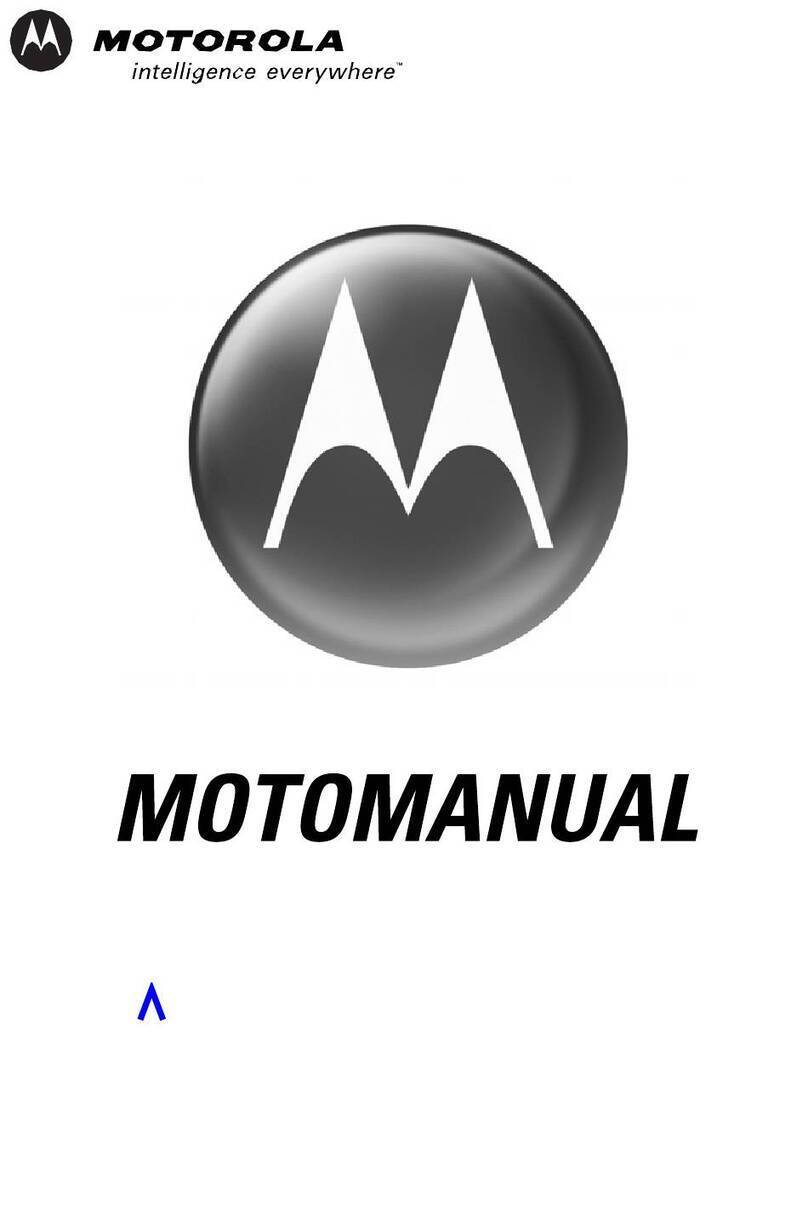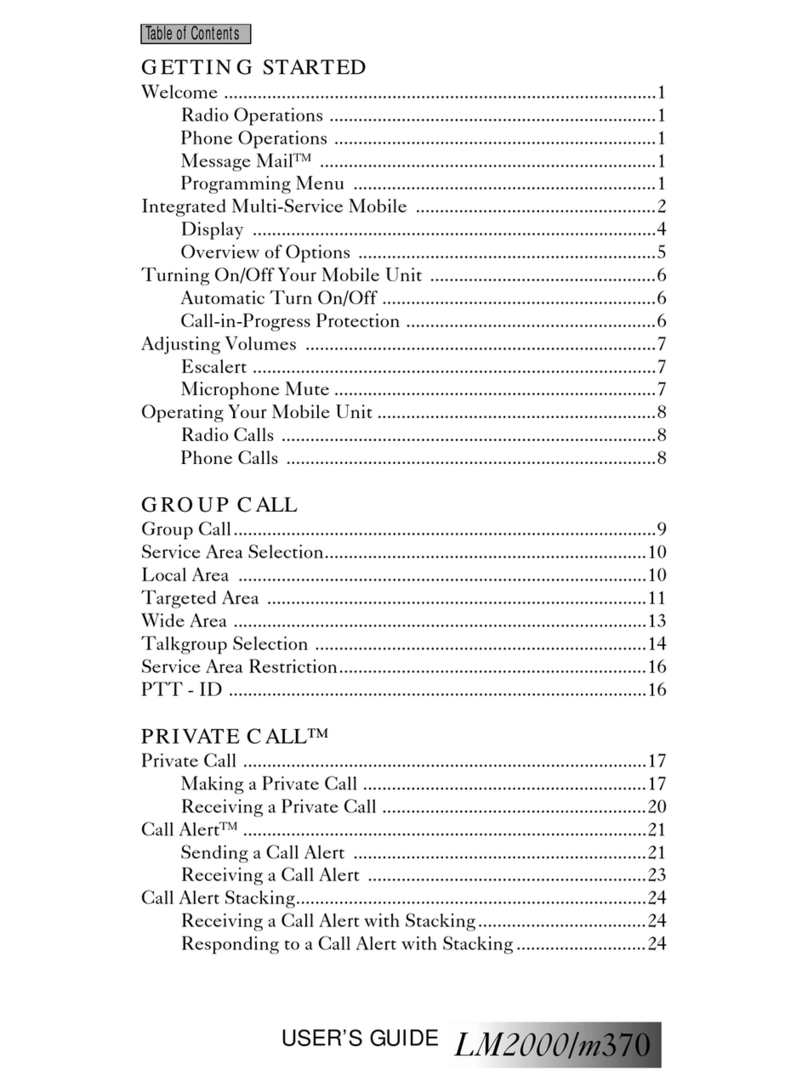
ii
Receiving Calls . . . . . . . . . . . . . . . . . . . . . . . . . . . . . . . . . . . . 31
Pre-emptive Calling . . . . . . . . . . . . . . . . . . . . . . . . . . . . . . . . . 32
Broadcast Call . . . . . . . . . . . . . . . . . . . . . . . . . . . . . . . . . . . . . 33
Ambience Listening (AL) . . . . . . . . . . . . . . . . . . . . . . . . . . . . . 34
Cancelling a Call . . . . . . . . . . . . . . . . . . . . . . . . . . . . . . . . . . . 34
Using In-call Features . . . . . . . . . . . . . . . . . . . . . . . . . . . . . . . 35
Covert Mode . . . . . . . . . . . . . . . . . . . . . . . . . . . . . . . . . . . . . . 35
Local Area Service . . . . . . . . . . . . . . . . . . . . . . . . . . . . . . . . . 35
Packet Data . . . . . . . . . . . . . . . . . . . . . . . . . . . . . . . . . . . . . . . 36
TMO Group Call . . . . . . . . . . . . . . . . . . . . . . . . . . . . . . 39
General . . . . . . . . . . . . . . . . . . . . . . . . . . . . . . . . . . . . . . . . . . 39
Dual Microphone Feature . . . . . . . . . . . . . . . . . . . . . . . . . . . . 40
Selecting a Group . . . . . . . . . . . . . . . . . . . . . . . . . . . . . . . . . . 40
Selecting a Group using Navigation Keys/Alphabetic Search/Folder
Search . . . . . . . . . . . . . . . . . . . . . . . . . . . . . . . . . . . . . . . . . . . 41
Selecting a Folder . . . . . . . . . . . . . . . . . . . . . . . . . . . . . . . . . . 42
“My Groups” Folder . . . . . . . . . . . . . . . . . . . . . . . . . . . . . . . . . 42
Group Scrolling Configuration . . . . . . . . . . . . . . . . . . . . . . . . . 43
Activating/Deactivating Scanning . . . . . . . . . . . . . . . . . . . . . . 43
Making a Group Call . . . . . . . . . . . . . . . . . . . . . . . . . . . . . . . . 43
Receiving a Group Call . . . . . . . . . . . . . . . . . . . . . . . . . . . . . . 44
Transmit Inhibit . . . . . . . . . . . . . . . . . . . . . . . . . . . . . . . . . . . . 46
Dynamic Group Number Assignment (DGNA) . . . . . . . . . . . . 48
DMO Group Call . . . . . . . . . . . . . . . . . . . . . . . . . . . . . . 51
General . . . . . . . . . . . . . . . . . . . . . . . . . . . . . . . . . . . . . . . . . . 51
Dual Microphone Feature . . . . . . . . . . . . . . . . . . . . . . . . . . . . 52
“My Groups” Folder . . . . . . . . . . . . . . . . . . . . . . . . . . . . . . . . . 52
Selecting a Group . . . . . . . . . . . . . . . . . . . . . . . . . . . . . . . . . . 52
Selecting a Group using Navigation Keys/Alphabetic Search/Folder
Search . . . . . . . . . . . . . . . . . . . . . . . . . . . . . . . . . . . . . . . . . . . 52
Selecting a Folder . . . . . . . . . . . . . . . . . . . . . . . . . . . . . . . . . . 52
Group Scrolling Configuration . . . . . . . . . . . . . . . . . . . . . . . . . 52
Gateway/Repeater Selection . . . . . . . . . . . . . . . . . . . . . . . . . 52
Making a DMO Group Call (MS to MS) . . . . . . . . . . . . . . . . . . 56
Making a DMO Group Call via Gateway . . . . . . . . . . . . . . . . . 56
Making a DMO Group Call via Repeater . . . . . . . . . . . . . . . . . 56
Making a DMO Group Call via Gateway and Repeater . . . . . 57

